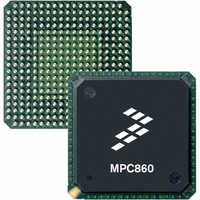MC68MH360ZP33L Freescale Semiconductor, MC68MH360ZP33L Datasheet - Page 761

MC68MH360ZP33L
Manufacturer Part Number
MC68MH360ZP33L
Description
IC MPU 32BIT QUICC 357-PBGA
Manufacturer
Freescale Semiconductor
Specifications of MC68MH360ZP33L
Processor Type
M683xx 32-Bit
Speed
33MHz
Voltage
5V
Mounting Type
Surface Mount
Package / Case
357-PBGA
Lead Free Status / RoHS Status
Contains lead / RoHS non-compliant
Features
-
Available stocks
Company
Part Number
Manufacturer
Quantity
Price
Company:
Part Number:
MC68MH360ZP33L
Manufacturer:
FREESCALE
Quantity:
1 831
Company:
Part Number:
MC68MH360ZP33L
Manufacturer:
MOTOLOLA
Quantity:
672
Company:
Part Number:
MC68MH360ZP33L
Manufacturer:
Freescale Semiconductor
Quantity:
10 000
Part Number:
MC68MH360ZP33L
Manufacturer:
FREESCALE
Quantity:
20 000
Company:
Part Number:
MC68MH360ZP33LR2
Manufacturer:
Freescale Semiconductor
Quantity:
10 000
- Current page: 761 of 962
- Download datasheet (5Mb)
Freescale Semiconductor, Inc.
Applications
9.4.2.4 FLASH EPROM. Figure 9-11 shows the interface to flash EPROM devices. In this
design, the assumption is made that only the MC68EC040 will access this array. The
inverter is only required if DRAM is used elsewhere in the system, since the OE function is
lost when the AMUX pin is used. This design assumes that the write operations are CE con-
trolled, rather than WE controlled. Most flash EPROM manufacturers now support this alter-
native timing method.
9.4.2.5 REGULAR SRAM. Figure 9-12 shows the interface to SRAM. In this design, both
the MC68EC040 and the QUICC may access the SRAM array. The inverter is only required
if DRAM is used elsewhere in the system, since the OE function is lost when the AMUX pin
is used. This design also allows the QUICC to support bursting by the MC68EC040 using
the BADD3–BADD2 signals. The QUICC also uses these signals as A3–A2 address lines
during its normal SRAM accesses. If MC68EC040 bursting is not supported, the BADD3–
BADD2 signals can be replaced with the A3–A2 signals.
9.4.2.6 BURST SRAM. Figure 9-13 shows the interface to Motorola's 32K 9 MCM62940A
bursting SRAM. This can provide better memory throughput speeds than the regular SRAM
array. Figure 9-13 shows the solution for an array that is accessed by the MC68EC040 and
the QUICC.
To speed access times, the chip select pin (S0) of the burst SRAM is connected directly to
the A27 pin of the system bus. This gives half of the usable address space to this array,
although this should not be a problem in most systems considering the 28 address pins
available. No chip select pin from the QUICC is used.
The inverter on the R/W signal is only required if DRAM is used elsewhere in the system,
since the OE function is lost when the AMUX pin is used. The CLKO1 signal is derived
directly from the QUICC CLKO1 pin. Parity is also supported in the array, using the PRTY3–
PRTY0 signals on the system bus.
Although not used in this design, Motorola also offers a larger version of the MCM62940A,
called the MCM67M618, that is organized into a 64K
18 array.
In Figure 9-13, the TSC pin is connected to the AS pin to handle the QUICC accesses. The
QUICC accesses do not use the bursting feature of the MCM62940A. BAA, which could be
asserted during the QUICC accesses due to the QUICC DSACK1 being multiplexed with the
MC68EC040 TA, is a don't care as long as TSC remains low. After TSC negated, the OE
and WE signals are negated, disabling the MC62940A burst
9-41
MC68360 USER’S MANUAL
MOTOROLA
For More Information On This Product,
Go to: www.freescale.com
Related parts for MC68MH360ZP33L
Image
Part Number
Description
Manufacturer
Datasheet
Request
R
Part Number:
Description:
Manufacturer:
Freescale Semiconductor, Inc
Datasheet:
Part Number:
Description:
Manufacturer:
Freescale Semiconductor, Inc
Datasheet:
Part Number:
Description:
Manufacturer:
Freescale Semiconductor, Inc
Datasheet:
Part Number:
Description:
Manufacturer:
Freescale Semiconductor, Inc
Datasheet:
Part Number:
Description:
Manufacturer:
Freescale Semiconductor, Inc
Datasheet:
Part Number:
Description:
Manufacturer:
Freescale Semiconductor, Inc
Datasheet:
Part Number:
Description:
Manufacturer:
Freescale Semiconductor, Inc
Datasheet:
Part Number:
Description:
Manufacturer:
Freescale Semiconductor, Inc
Datasheet:
Part Number:
Description:
Manufacturer:
Freescale Semiconductor, Inc
Datasheet:
Part Number:
Description:
Manufacturer:
Freescale Semiconductor, Inc
Datasheet:
Part Number:
Description:
Manufacturer:
Freescale Semiconductor, Inc
Datasheet:
Part Number:
Description:
Manufacturer:
Freescale Semiconductor, Inc
Datasheet:
Part Number:
Description:
Manufacturer:
Freescale Semiconductor, Inc
Datasheet:
Part Number:
Description:
Manufacturer:
Freescale Semiconductor, Inc
Datasheet:
Part Number:
Description:
Manufacturer:
Freescale Semiconductor, Inc
Datasheet:











